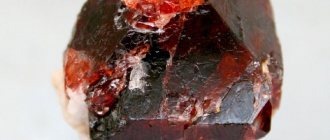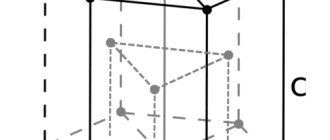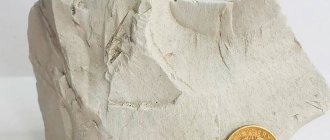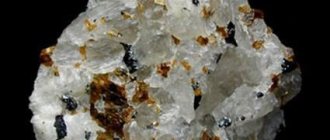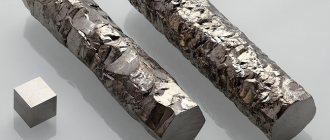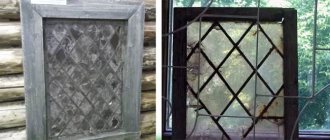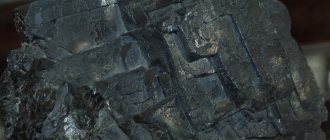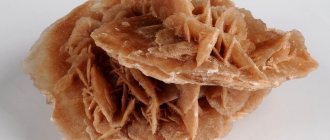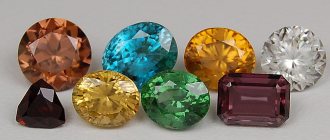What is cubic zirconia
Quite a large number of people mistakenly believe that zirconium and zircon are the same stone. In reality, such a belief is completely wrong.
Find out what awaits you today - Horoscope for today for all zodiac signs
Due to numerous requests from subscribers, we have prepared an accurate horoscope application for mobile phones. Forecasts will arrive for your zodiac sign every morning - it's impossible to miss! Download for free: Daily Horoscope 2020 (available on Android)
Zircon is a natural and quite expensive mineral, its properties are very similar to sapphires. Its name comes from the Persian word “tsargun”, which means “golden gem”.
Zircon is distinguished by its very bright shine, thanks to which it has become known as the “little brother of the diamond” or the “imperfect diamond.”
cubic zirconium ? It is also otherwise called cubic zirconia. The nature of zirconium is artificial, because it was created in the laboratory as a cheap analogue of a diamond. Indeed, the mineral could compete with diamond in its beauty, if only we did not know the truth.
The history of the creation of zirconium is not long. So it was invented by Soviet scientists in the second part of the 20th century. Since then, cubic zirconium has managed to take pride of place in the list of leading stones in the jewelry industry.
Interesting point. The original purpose of creating the stone was to use its optical and other properties to make lasers work more efficiently. A natural gem was not suitable, since it always contains some defects, and scientists needed a perfectly smooth sample.
Cubic zirconium is an artificial gem called not only in domestic countries, but also abroad.
Raw materials for production
Due to its dispersion, the mass fraction of zirconium in the earth’s crust, unfortunately, has not yet been established. According to scientists, it can be 170-250 grams per ton. Actually, there are many zircon minerals themselves in nature. At the moment, scientists know about 40 of their varieties. However, most often only the following raw materials are used for the production of zirconium:
- baddeleyite;
- eudialyte;
- zircon.
As already mentioned, there are no large zircon deposits on the planet. In Russia there are only a few small deposits of such minerals. They are also mined in countries such as the USA, India, Brazil and Australia. The most common mineral used to produce zirconium is, of course, zircon (ZrSiO4). In most cases, it is accompanied in nature by hafnium.
What types of cubic zirconia stones are found?
Cubic zirconia created in a laboratory can vary in appearance. All minerals are classified according to color variations, which are influenced by their chemical composition.
Let's look at this in more detail by finding out what types of cubic zirconia there are:
- classic - they are devoid of any color, have a transparent structure, and are very similar in appearance to diamonds;
- green gems - this color is obtained due to the increased chromium content. Green zirconium is a budget substitute for emerald;
- red crystals - become so thanks to the artificial addition of neodymium. They closely resemble garnet or ruby, depending on the concentration of the chemical in the stone;
- warm stones, especially light yellow or bright red ones, are created by adding cerium;
- delicate pinkish cubic zirconia - created thanks to erbium;
- crystals of brown and golden colors are not so widespread, but such a shade will indicate a titanium impurity in the composition;
- and stones containing blue and cyan tones are distinguished by more complex production technology. To create them, a special method is used, when a mixture consisting of cobalt and aluminum is sprayed onto the surface of the mineral, and the entire action takes place in a vacuum. The result is imitations of sapphires, aquamarines or topaz;
- Black cubic zirconias are not very popular these days.
Zirconium metal. Description and properties of zirconium
The silver-gray metal, which occupies 40th place in the periodic table, is not found in its pure form in the earth’s crust. It is obtained from ore concentrates. Every year, zirconium metal is increasingly used in various industries - metallurgy, energy, nuclear energy, medicine, jewelry industry, and in everyday life.
Description and properties of zirconium
In nature, this metal is distributed in the form of chemical natural compounds - oxides or salts, of which more than forty are known. In 1789, the German chemist Klaproth isolated zirconium oxide from hyacinth stone, a precious variety of zircon. For a long time, scientists were unable to obtain pure metal, and only in the 20s of the 20th century were experiments crowned with success.
Zirconium metal was produced by the "build-up" method, in which it was deposited in pure form on a tungsten hot filament. The price of zirconium metal obtained in this way turned out to be quite high. A cheaper industrial method was developed - the Kroll method, in which zirconium dioxide is first chlorinated and then reduced with magnesium metal.
The resulting zirconium sponge is melted into rods and sent to the consumer. In addition to the chloride method, there are other main industrial methods for extracting zirconium - alkaline and fluoride. It turned out that the metal zirconium has very interesting properties. As a typical representative of its group of metals, it has fairly high chemical activity, but it does not manifest itself in open form.
Externally, compact metal zirconium is very similar to steel. Under normal conditions, it has a very important quality - it does not corrode. In addition to this, it is perfectly processed in various ways - rolling, rolling, forging. An oxide film on the surface, invisible to the eye, reliably protects it from atmospheric gases and water vapor. Only when the temperature rises to 300° does this film gradually collapse, and at 700° the metal is completely oxidized.
When exposed to water, zirconium does not oxidize, like many metals, but is covered with an insoluble film that protects it from corrosion. Compact zirconium metal photo is characterized by high heat resistance, resistance to ammonia, acids, alkalis, and holds radiation well. Zirconium shavings and powder behave completely differently in air. These substances, even at room temperature, can easily ignite spontaneously and often explode.
Zirconium forms alloys with many metals. Adding it in small quantities significantly improves their characteristics - increases strength and corrosion resistance. At the same time, additions of other metals to zirconium only worsen its properties and are therefore used extremely rarely.
Zirconium deposits and mining
Zirconium ore deposits are scattered in different places on the planet. It is found in the form of amorphous oxides, salts, and large single crystals, sometimes weighing over one kilogram. Rich ore reserves are located in Australia, North America, West Africa, India, South Africa, and Brazil. In Russia, significant reserves of zirconium raw materials are concentrated in the Urals and Siberia.
The most significant industrial uses are zircon, zirconium silicate, zirconium dioxide, and baddeleyite. The most common zirconium mineral on the planet is zircon. It has been known to mankind since ancient times. In the Middle Ages, jewelers often made jewelry from “imperfect diamonds,” as zircons were called in those days. After cutting, they were more cloudy, shone and shimmered differently than natural diamonds.
There are dangerous radioactive zircons, the wearing of jewelry from which has a very bad effect on health. Small stones, lightly colored and relatively transparent are considered safer. Zircons come in different colors. So, hyacinth can be honey-yellow, red, pink, starlight can be sky blue.
Large, intensely colored zircons, especially green and opaque ones, can cause increased levels of radiation. Such stones are prohibited from being stored at home in collections, cut, or transported in large quantities. Despite the fact that zirconium ranks 12th in terms of abundance in nature among metals, it has long been less popular compared to even rare radioactive ones. This is explained by the fact that its deposits are extremely scattered and there are no large deposits.
Often in ore, zirconium is adjacent to hafnium, which is similar in properties. Individually, each of these metals has attractive characteristics, but their presence together makes them unsuitable for use. To separate them, multi-stage purification is used, which significantly increases the cost of producing ductile zirconium.
Applications of zirconium
Due to such important qualities as resistance to corrosion, alkalis, and acids, zirconium is widely used in various industries. Thus, in metallurgy it is used to alloy steels and improve the quality of alloys. In powder form, it is used in pyrotechnics and the production of ammunition - remote bombs, tracer bullets, flares.
A quarter of the resulting zirconium concentrate is consumed in the production of enamel, glaze, household and electrical ceramics. Zirconium purified from hafnium in the form of alloys is used in nuclear reactors as a structural material. This metal is widely used in medicine and everyday life. A thin zirconium plate blocks radiation in the X-ray department much more than lead aprons.
Zirconium metal healing properties
To treat bone fractures, traumatology clinics use implants made of zirconium alloys. Compared to titanium and stainless steel, they have significant advantages: biological compatibility (no allergic reaction or rejection), high corrosion resistance, strength, ductility, and lightness.
In maxillofacial surgery, zirconium instruments and implants are used, such as staples, plates, drills, screws, dentures, hemostatic clamps, and suture threads. Zirconium and its alloys do not cause irritation when exposed to bones and tissues.
Zirconium metal in jewelry has a beneficial effect on the general condition of the human body. It has been established that wearing zirconium earrings after ear piercing promotes rapid healing of the wound and never causes it to rot.
When worn regularly, zirconium products have a positive effect on health. Good results are achieved by wearing zirconium bracelets and belts for skin diseases such as eczema in children and adults, dermatitis, and psoriasis. There is a significant improvement in the condition of patients with problems in the musculoskeletal system.
Zirconium price
Metal is sold per kilogram. Supplied in the form of a pipe, rod, strip, wire, sheet, etc. The cost depends on the manufacturer and brand of the product.
Areas of application of cubic zirconia
Cubic zirconia is a fairly popular synthetic gem used in various areas of life, namely:
- In the jewelry industry. The attractive appearance of crystals, as well as their bright shine, makes them an ideal cheap imitation of many natural stones.
- In the chemical industry. Its physical properties, for example, refractoriness, are highly valued here.
- In medicine. Cubic zirconium is used in the process of creating ceramic spraying, because it is able to maintain stability even in a very aggressive environment.
- In esotericism, astrology. Cubic zirconia is a universal gem that can be worn by all people. However, there is an opinion that it is most suitable for scientists.
- In the field of development and design of optical devices. Devices and lenses using cubic zirconia are characterized by a high level of quality.
The magical abilities of the mineral
Although the stone is of a synthetic nature, a number of magical properties are still attributed to it.
- Increases concentration on the main thing, disciplines its owner, and ensures successful multitasking.
- Develops eloquence, public speaking, and communication skills. In this regard, cubic zirconia is ideal for traders, journalists, translators and all those whose work is related to society.
- The stone protects and attracts good luck on trips and travels.
- The crystal is filled with the emotions of its owner. True, sometimes it can take away not only bad, but also good energy, which should not be forgotten.
- Zirconium also enhances the healing and magical powers of other minerals used.
Note. According to a common superstition, although cubic zirconia improves communication, a person wearing jewelry with it risks becoming alone. True, it is unknown to what extent such a statement is justified.
The main differences between zirconium crowns and metal-ceramic crowns
To understand whether zirconium dioxide or metal ceramics is better, we provide comparative characteristics for the following aspects:
- Tooth turning . The metal frame, which gives strength to the metal-ceramic crown, requires significant grinding of the tooth. In the case of using crowns based on zirconium dioxide, which has high strength, tooth grinding is minimal. In numbers, the thickness of a cap made of zirconium dioxide is 0.3 mm, and that of a metal alloy is 0.6 mm, i.e., when zirconium dioxide is used on both sides, 0.6 mm less bone tissue is removed from the tooth;
- Light transmittance . Metal-ceramic crowns do not have the transparency characteristic of the tissues of a living tooth. Zirconium dioxide, on the contrary, has good light transmittance. Crowns made from it look natural and are indistinguishable from “natural” teeth. Even in ultraviolet light (in a nightclub), nothing will reveal the secret of a new smile;
- Allergic reactions . Metal structures can cause allergic reactions. Zirconium dioxide is a biocompatible material and does not cause allergies;
- Durability . Metal frames are stronger than zirconia frames. However, this feature is important when using bridges; when using single crowns, this factor does not have a significant impact on the service life;
- Possibility of crown installations without depulpation . Metal-ceramic crowns have good thermal conductivity. To prevent the tooth under the crown from reacting to hot and cold, you must first dupulpate it (“remove the nerve”). The low thermal conductivity of zirconium dioxide, as a rule, allows you to preserve a living tooth under the crown without the risk of pain at high and low temperatures;
- Precision manufacturing . The frame of metal-ceramic crowns is smelted by a dental technician. The accuracy of manufacturing can be influenced by human factors. The production of zirconium dioxide crowns is a computer-controlled process (CAD/CAM technology). It ensures that the crown “fits” accurately and adheres well to the treated tooth. There are no gaps between the tooth and the crown, therefore, bacteria do not get under the crown and caries does not develop.
Who is suitable according to their zodiac sign?
Since this mineral is not natural, but was created artificially, absolutely all people can use it as a talisman, despite belonging to certain constellations.
But even in this case, astrologers recommend following some tips related to the color of zirconium:
- Aries, Leo and Sagittarius can choose crystals of any color for themselves. Cubic zirconia will have a beneficial effect on the character of fiery individuals, eliminating their excessive emotionality.
- Pisces, Cancers and Scorpios should choose blue, black or light blue zirconium as a personal talisman.
- Libra, Gemini and Aquarius will find the best help from yellow stones, especially if it is bright and saturated.
- Virgo, Taurus, Capricorn - will benefit from brown or pinkish crystals.
So we figured out what kind of cubic zirconium stone it is, how it differs from zircon and what valuable properties it has.
Finally, a video on the topic:
Zircon stone
Not every person can afford to buy a diamond or other precious stone. But I want to show off my beauty, especially for women. Zirconium stone in jewelry looks richer and more elegant than jewelry made of precious metals without inserts.
But zirconium is not a stone, but a silver-colored metal. In the manufacture of jewelry, cubic zirconium (cubic zirconia) is used, which has nothing to do with zirconium. But the common people actually omit the word “cubic” and call cubic zirconia a zirconium stone.
They are trying to replace diamonds with glass, crystal, moissanite. But only zirconium is so similar to natural diamond that they can be confused. Fraudsters take advantage of this similarity in an attempt to sell a “replacement” gemstone at an inflated price.
Zirconium stone perfectly replaces diamonds in jewelry. Cubic zirconia sparkles very expressively, shimmering in shades and attracting attention.
